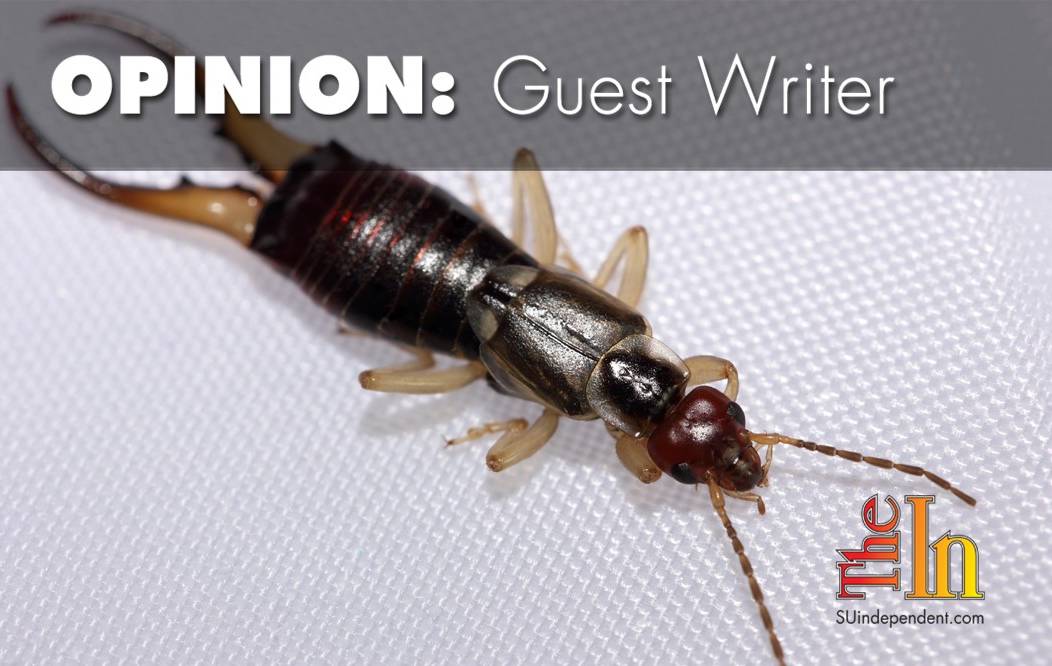 By: Taun Beddes, Utah State University Extension horticulturist
By: Taun Beddes, Utah State University Extension horticulturist
European earwigs are common in Utah and are easily recognized by the large pincers on the end of their bodies. The ideas that earwigs crawl into ears and that their pincers are dangerous are both false.
Earwigs are active at night and often go unnoticed; however, holes chewed in leaves can indicate earwigs have been dining there. If you suspect that earwigs may be eating your plants, examine them at night with a flashlight. Earwigs can be beneficial, acting as decomposers and predators of insect pests such as aphids and scales. However, they also feed on many vegetables, leafy greens, flowers, and a wide variety of fruit. Since they spend the winter as adults, they can also become an indoor nuisance pest. Consider these tips for ridding your home and yard of earwigs.
Homemade earwig traps are inexpensive and can reduce earwig numbers in specific areas.
One type is made from corrugated cardboard. Cut a 6-inch-wide strip of cardboard and roll until it reaches about 4 or 5 inches in diameter. Tie the roll with string to keep it intact, then tie it to the lower trunk of a tree. Collect the cardboard traps every two or three days, seal the earwigs inside a bag, and throw the earwigs and the trap away. Rubbing the cardboard with fish oil or bacon grease can make the trap more effective.
Another type of earwig trap is a sour cream, cottage cheese, or margarine container with strong-smelling oil, such as fish oil or bacon grease, poured into the bottom.
Bury the container in the ground almost to soil level, and cut a small hole in the lid for the earwigs to enter. The containers can be collected every few days and reused after the earwigs are dumped into a bag and sealed.
Commercial, non-chemical control products are widely available, such as diatomaceous earth.
This product is not harmful to pets or humans, but works by cutting or absorbing the thin, waxy layer that covers insects. Sprinkle it around the base of plants that earwigs and other insect pests, such as aphids, scales, and caterpillars, are damaging. Be aware that once diatomaceous earth contacts water, it becomes ineffective. It must be reapplied after rain or watering. To keep earwigs out of fruit trees, try wrapping sticky traps, such as Tangle Guard, around the tree trunk.
Occasionally, it may become necessary to spray an insecticide to effectively control earwigs.
Organic and reduced-risk products are available such as pyrethrins and spinosad. Pyrethrins are derived from a species of chrysanthemum and control many insects. Spinosad is derived from a bacterium harmful to many insects but not mammals. Both are often labeled for use on many vegetables and fruits. Other chemical sprays are effective, but may harm natural enemies of earwigs and other beneficial insects. Of these available to homeowners, carbaryl (Sevin), malathion and permethrin are commonly used. Using non-chemical methods before resorting to sprays is recommend in most non-commercial situations.
Ryan Davis, USU Plant Pest Diagnostic Lab insect diagnostician, contributed to this column.
ARTICLES RELATED TO “FOUR TIPS FOR GETTING RID OF EARWIGS”
Southern Utah Gardening: The time has come to fertilize your lawn and garden
Southern Utah Gardening: Successfully growing citrus in southern Utah



